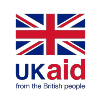The World Day Against Child Labour serves as a stark reminder that not all children are equal and there is an urgency, now more than ever to understand the causes of and eliminate the worst forms of child labour. Yet, amidst the backdrop of a global pandemic, COVID-19, exposes children to further risk – especially those already engaged in some of the most dangerous and hazardous work.
Many of the families count on their children’s income to run the family, yet the prolonged disruption of the global pandemic is likely to jeopardise working children by lowering their pay and requiring them to work much longer hours, exposing them to risk of abuse and exploitation among others, and indeed to work with the risk of the virus itself.
The children who work in the dangerous and exploitative forms of labour live in the margins of society. Their already precarious existences have become even more precarious as a result of the global pandemic. Their stories are mostly unheard. Their perspectives on what is needed to create change are rarely surfaced. Yet they are best placed to understand what is going on and how to change it.
Taking participatory action
Today, we launch the Child Labour: Action-Research-Innovation in South and South-Eastern Asia (CLARISSA) consortium website. The ‘shop window’ of our work. CLARISSA is building processes to support children and families to engage in the research and choose practical alternatives to the dangerous work they may be trapped in, and to mitigate its worst effects. We want to show how participatory evidence gathering, analysis and action can be mobilised to create change. We are talking about change that is meaningful and sustainable for those that have few choices right now as a result of the economic realities that they face.
CLARISSA is a unique partnership led by the Institute of Development Studies, with Terre des hommes, ChildHope and the Consortium of Street Children. Together, we have put together an ambitious participative process which centres children and their perspectives. The work closely follows supply chains characterised by the most exploitative and hazardous forms of child labour, be it the leather sector in Bangladesh, the waste and fishing industries in Myanmar, or the adult entertainment sector in Nepal. By focusing on these supply chains, we are aiming to surface not only the pathway of goods through workplaces where children work but also how children end up in this type of work.
In Bangladesh, Myanmar and Nepal, we will run 18 action research processes with the aim of coming up with innovative responses to the worst forms of child labour within these sectors. Alongside and supporting these processes we will be collecting over 1200 life stories of children, as well as supporting child led research in each country. The programme aims both to generate action on the ground and influence governments and policymakers through the evidence it generates from the ground.
Modelling transformative change
CLARISSA is also supporting a large-scale social protection pilot programme in Dhaka which is exploring the ways in which cash transfers combined with participatory engagement can impact on the worst forms of child labour. As the world attempts to recover from the shock of COVID19, the learning about the effectiveness of social protection in response to shocks will be invaluable beyond Bangladesh.
It is this approach that makes CLARISSA a transformative and much-needed model for our times. We will not only identify where some of the most hazardous and dangerous forms of child labour exist but will support spaces and processes for people involved in the worst forms of child labour (most importantly the children themselves) to catalyse urgently needed change.
